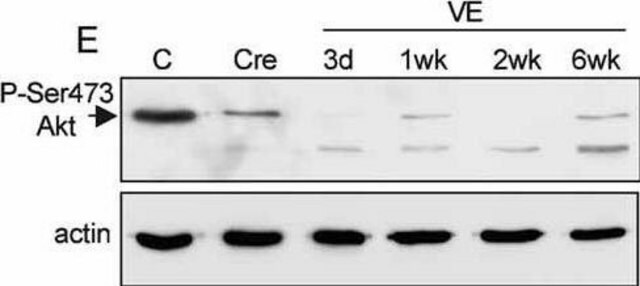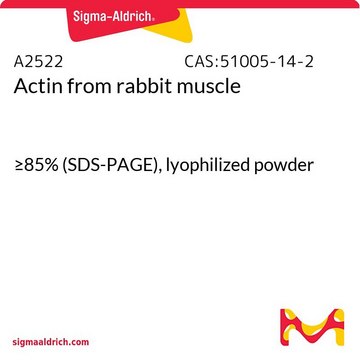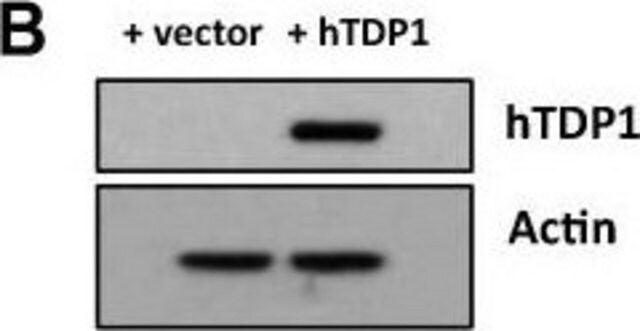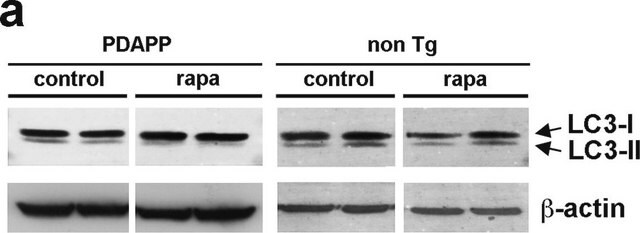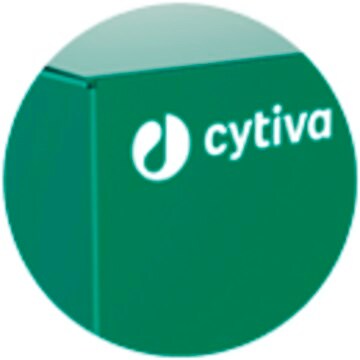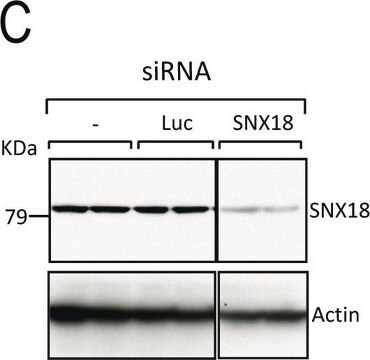A5060
Anti-Actin (20-33) antibody produced in rabbit

IgG fraction of antiserum, buffered aqueous solution
Sinonimo/i:
Anti-ACTA
About This Item
Prodotti consigliati
Origine biologica
rabbit
Livello qualitativo
Coniugato
unconjugated
Forma dell’anticorpo
IgG fraction of antiserum
Tipo di anticorpo
primary antibodies
Clone
polyclonal
Stato
buffered aqueous solution
PM
antigen 42 kDa
Reattività contro le specie
wide range (animal), invertebrates
Confezionamento
antibody small pack of 25 μL
Convalida avanzata
independent
Learn more about Antibody Enhanced Validation
tecniche
immunohistochemistry (formalin-fixed, paraffin-embedded sections): suitable using chicken or rat tissue sections
indirect immunofluorescence: 1:200 using cultured human fibroblasts
microarray: suitable
western blot: 1:250 using using rat brain or chicken muscle extracts
Condizioni di spedizione
dry ice
Temperatura di conservazione
−20°C
modifica post-traduzionali bersaglio
unmodified
Informazioni sul gene
human ... ACTA1(58)
mouse ... Acta1(11459)
rat ... Acta1(29437)
Descrizione generale
The antibody shows a broad reactivity among actin isoforms and across a range of organisms. It specifically stains typical stress fibers in cultured cells using an indirect immunofluorescent labeling technique and can be used as a probe of the N-terminal region of actin.
Specificità
Immunogeno
Applicazioni
Azioni biochim/fisiol
Stato fisico
Stoccaggio e stabilità
Altre note
Esclusione di responsabilità
Non trovi il prodotto giusto?
Prova il nostro Motore di ricerca dei prodotti.
Codice della classe di stoccaggio
10 - Combustible liquids
Classe di pericolosità dell'acqua (WGK)
WGK 2
Scegli una delle versioni più recenti:
Possiedi già questo prodotto?
I documenti relativi ai prodotti acquistati recentemente sono disponibili nell’Archivio dei documenti.
I clienti hanno visto anche
Il team dei nostri ricercatori vanta grande esperienza in tutte le aree della ricerca quali Life Science, scienza dei materiali, sintesi chimica, cromatografia, discipline analitiche, ecc..
Contatta l'Assistenza Tecnica.



